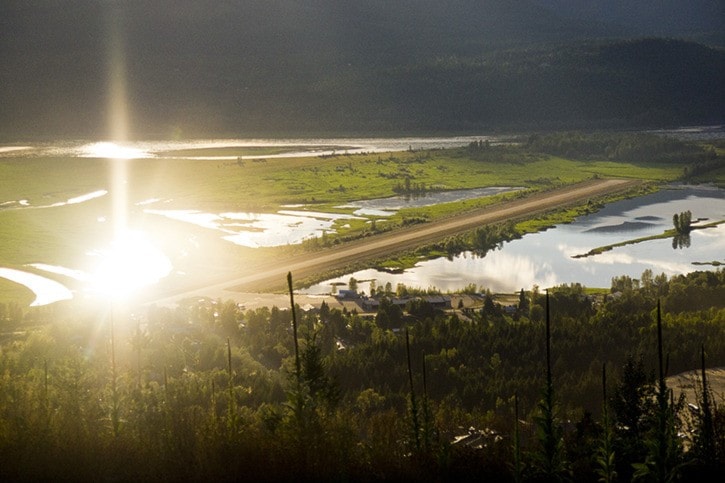It may be difficult to imagine, but at one time the land that occupies the Revelstoke Airport was home to a farm large enough to supply produce to all of the local hotels.
Now part of the airport marsh, Revelstoke Museum curator Cathy English spoke about the Samuel Crowle Farm, established in 1886, which at the height of its existence employed 12 people.
English's presentation on the history of the Revelstoke wetlands was part of the North Columbia Environmental Society's effort to raise awareness about the airport marsh.
The event, held at the Revelstoke Visual Art Centre this past Friday, had all the fixings of a usual gallery opening —- work by local artists occupied space on the walls and attendees mingled, socializing with one another, enjoying a glass of wine or a few appetizers on offer.
A slide show of local photography showcased the Revelstoke Wetlands and included work by Keri Knapp, William Eaton, Kip Wiley, Michael Morris, Jackie Morris, Harry Van Oort, Corey Bird, Jen Greenwood and Alex Cooper.
English, who was the first of the speakers to present, began her talk by giving homage to the Sinixt Nation whose territories included the areas around Revelstoke. “You can't talk about the history of the valley without noting it was used by First Nations," she said. "The Sinixt Nation used the Columbia River. I think that's something we have to bear in mind, settlers didn't come here not finding people here."
Her presentation focused on the huge losses that occurred from the creation of the Arrow Lakes reservoir, particularly the farming community of Mount Cartier.
"I think this is one of the real losses," English said, speaking about the cemetery at Mount Cartier, which was covered by a concrete slab prior to the flooding. English said that in some cases, families were able to have buried family members disinterred and moved to the Revelstoke Cemetery, however, in most cases this was simply too expensive.
Retired BC Hydro employee Brian Gadbois said he knows well the impact the flooding had on local farming communities — his family was directly impacted by the reservoir.
"I've seen both sides,” he said. “Definitely this area, the Kootenays and the Columbias, have received the brunt of energy production in the province."
Gadbois spoke about the influence Arrow Reservoir has on the wetlands, noting that not all of the areas that were flooded are crown land. He focused on the mecca of wildlife in the area, including moles, voles, mice, rabbits, eagles, osprey, hawks, wolves, owls, swans and blue heron.
"We're very fortunate to have a colony of these prehistoric birds," Gadbois said of the blue heron.
Gadbois' focus on wildlife in the wetlands was continued during presentations by Harry Van Oort and Corey Bird, both biologists with Cooper Beauchesne and Associates.
"Airport marsh is a really important place for wildlife in our region," said Van Oort. "A lot of water fowl use this area for migration. There's a whole myriad of songbirds that nest in the area."
In fact, a study that will begin this summer will focus on studying marsh bird conservation and productivity in Revelstoke Reach. Bird’s presentation honed in on this upcoming study, which will focus on a small number of birds (Sora, Virginia Rail, American Bittern) noted that not a lot of information is known about these birds.
"We know very little about these species," he said. "We've found a lot of nests, but they didn't seem habitat specific, they seem opportunistic."
While presentations focused on the past and present of the Revelstoke wetlands, regrets from Jean-Marc Laflamme of Jump on Flyaways, Alan Mason from the City of Revelstoke and Gary Holte from the Columbia Shuswap Regional District meant the event was lacking when it came to the future of the area.
Holte, who is the Interim Team Leader, Community Services for CSRD, did email a letter to Amy Clarke of the NCES stating that in 2014, the CSRD intends to complete installation of fencing along airport runway at Revelstoke Airport.
"This will provide a separation between the public that access the Columbia River flats to enjoy nature and the airport operations. The CSRD has no plans to expand the airport beyond its current boundaries," the statement said.
